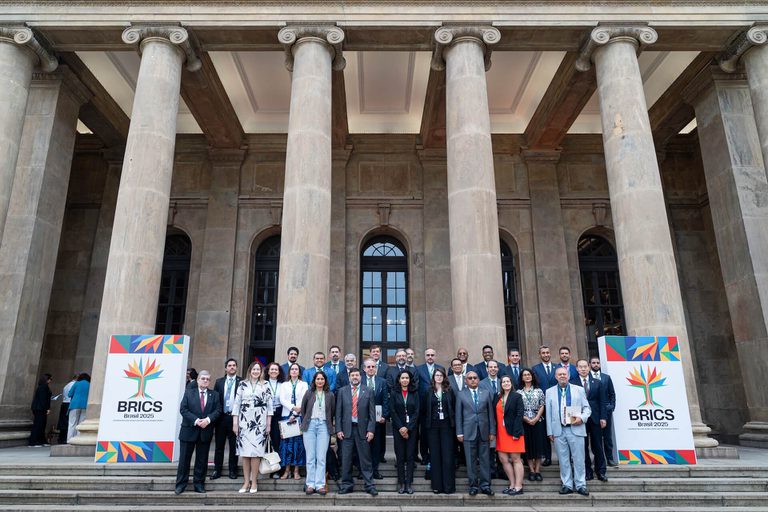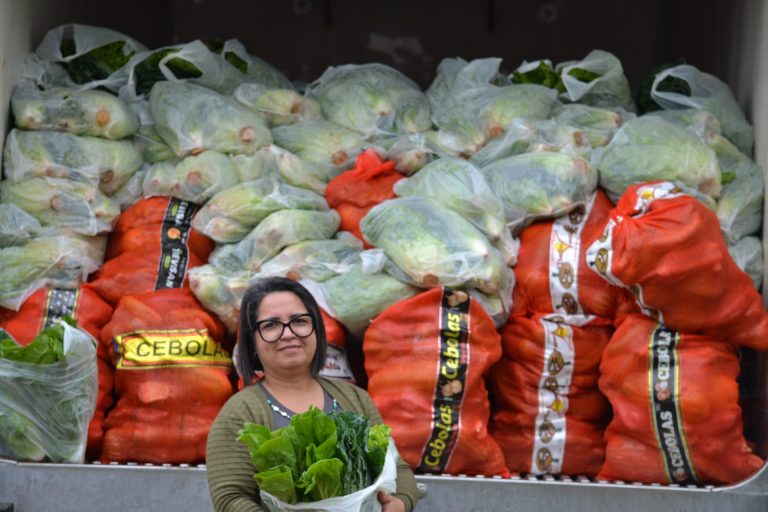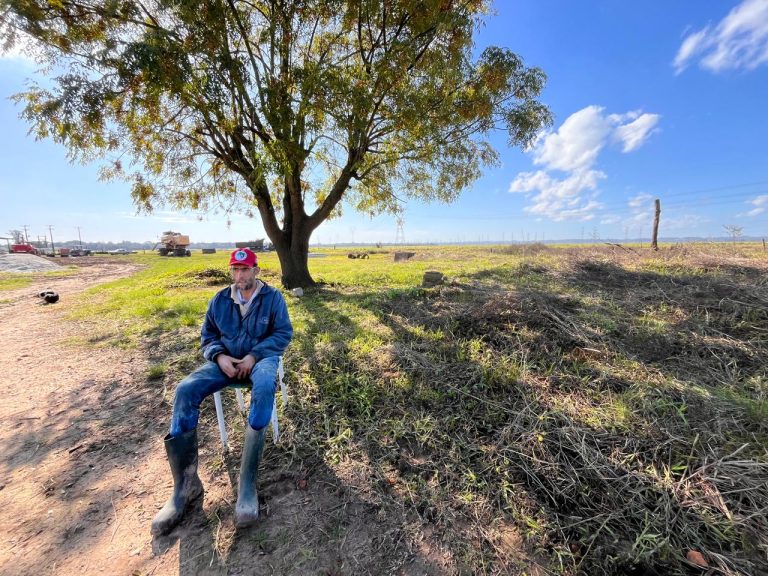Agrarian Question
Balance of the Agrarian Question in Brazil in 2021 (CPT Northeast II)
The Pastoral Land Commission of the Northeast II publishes the balance of the year 2021 for the peoples of the land, waters and forests. Check out the full analysis:
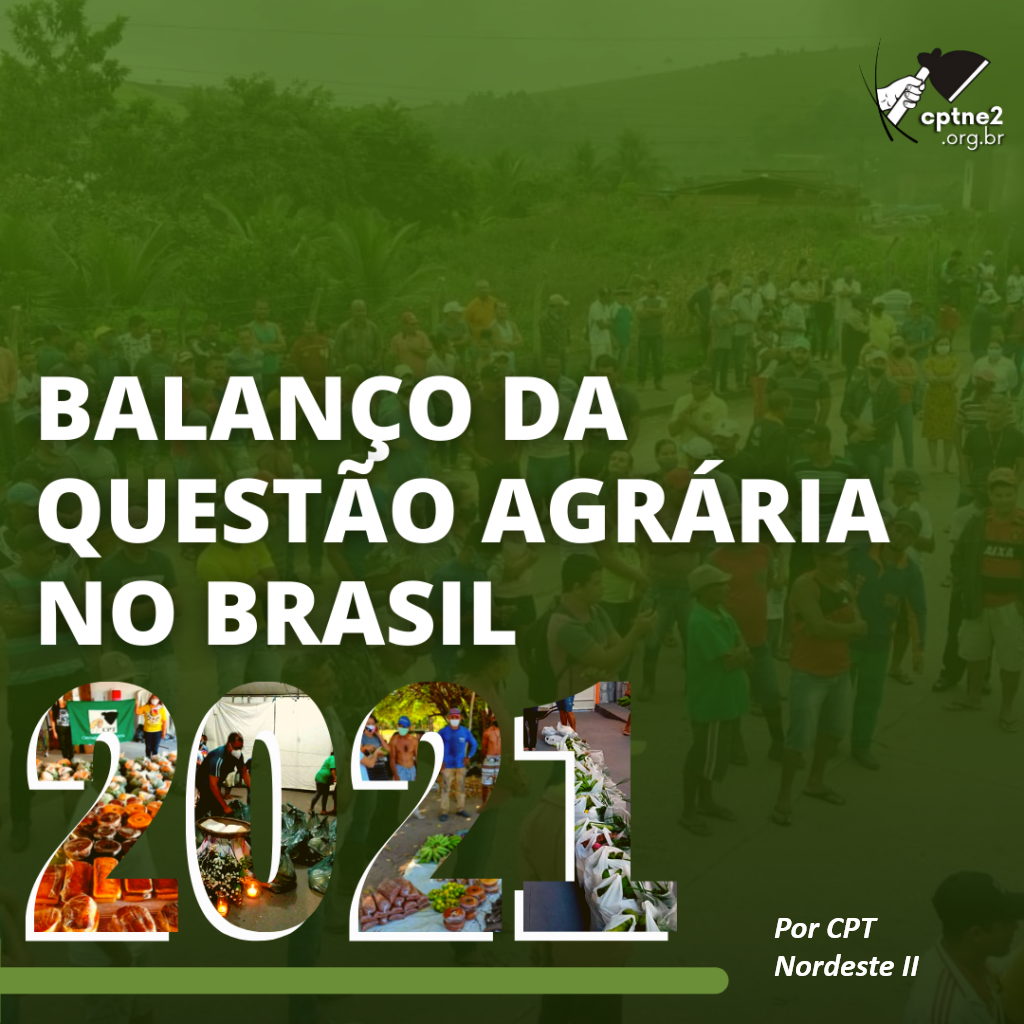
From the MST Page
While agribusiness broke export records and common goods were enthusiastically delivered by the State to the market, we witnessed an increase in hunger, misery, unemployment and violence in the countryside. Fire and destruction took over the Amazon, the Cerrado and the Caatinga. The continuity of the genocidal and neoliberal policy of the Bolsonaro government aggravated the serious crisis – health, economic, social and political – in the country in the second year of the pandemic.
At the beginning of 2021, Brazil seemed to raise hopes with the expectation of the arrival of the vaccine against Covid-19 and with the record of a fall in the moving average of deaths from the disease at the end of 2020. However, contrary to what was expected, we faced a long period of deaths due to the virus. More than 600,000 lives were lost.
The continuity of the Bolsonaro government’s genocidal policy exacerbated the country’s serious crisis – health, economic, social and political – in the second year of the pandemic. We are witnessing an increase in the contrast between wealth and extreme poverty, hunger, misery, unemployment and violence in the countryside; while agribusiness broke export records and common goods were enthusiastically delivered by the State to the market.
Despite the limitations imposed by the necessary social isolation, the population, communities, organizations and social movements did not remain silent and sought alternatives, especially through solidarity, to strengthen themselves, denounce injustices and legislative setbacks.
Agrarian reform in exile
In another year of Jair Bolsonaro’s term, there was no identification, declaration or approval of new traditional indigenous or quilombola territories. There were also no new expropriations of land for Agrarian Reform, but only the disclosure of the list of some families selected for settlements expropriated in past times. Where possible, the peoples of the land, waters and forests turned to state governments to see their rights enforced.
The budget of the National Institute of Colonization and Agrarian Reform (Incra) for the year that ended was R$ 3.4 billion. The government reduced to almost zero the expenses destined for the acquisition of land, for technical assistance, for credit for farmers and settlers and for education in the countryside. Most of the autarchy’s budget, about R$2.1 billion, was allocated to the payment of indemnities to large landowners due to property expropriations carried out in previous years. At the federal level, the Agrarian Reform and the demarcation of traditional territories, provided for in the Brazilian Constitution, were relegated to exile, and new strategies came into play to legalize the dispossession of rural peoples.
Showcase of public lands for the market – The hallmark of the agricultural and land policy of the Bolsonaro government, supported by the ruralist caucus of the National Congress, is the offer of land, including public and protected lands, for agribusiness. In the midst of several harmful actions to rural people, some gained prominence in 2021 and reflect the government’s anti-land reform and anti-constitutional policy.
One of them is the malignant association of the policy of social precariousness of the settlements with the liberation of the sale of titles of these families without positive expectations for the future. This policy has been a priority of the Bolsonaro government since the beginning of his term. The measure reduces the State’s responsibility with the Agrarian Reform policy by transferring the rural property to the settlers on a permanent basis without offering the minimum conditions for their socioeconomic development. Without adequate structures to live in the countryside and without technical support or investment for peasant production, families whose areas have been titled become more vulnerable to pressure from large companies and landowners. In other words, the land, previously destined for Agrarian Reform, will be concentrated again.
The titling policy gained yet another support with the Titula Brasil program, created by Joint Ordinance No. of Incra subject to titling through a partnership with municipal governments. Rural social organizations have, since then, emphatically denounced the risks of the program, pointed out nationally and internationally for favoring land grabbing in Brazil.
Another measure that expresses the Government’s intention to reverse the purpose of Agrarian Reform is Normative Instruction (IN) No. 112, published on December 22, 2021. It allows for the private exploitation and appropriation of land destined for Agrarian Reform in exchange for compensation by mining, energy or infrastructure projects. The regulations do not provide veto power for settled families and may affect Agrarian Reform areas across the country.
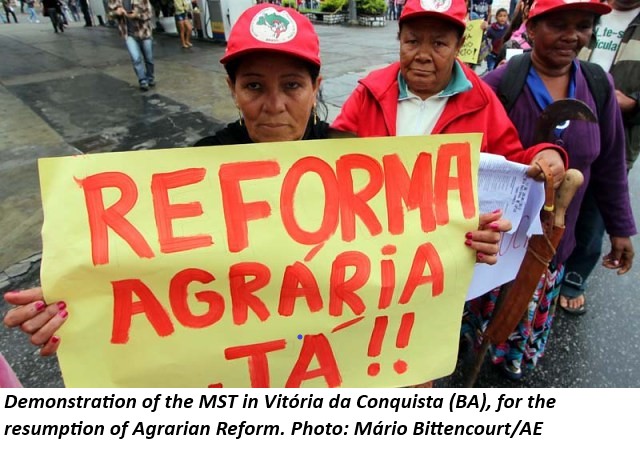
Violence in the countryside soars
Private power, benefited by the Bolsonaro government’s measures, was primarily responsible for the violence against peasant communities that are fighting for rights and permanence in their lands and territories.
According to partial data from the CPT on agrarian conflicts in the country, from January to August 2021, violence against occupation and possession was one of those that skyrocketed, reaching 418 territories. Of these, 28% are indigenous territories; 23% quilombolas; 14% are squatters’ territories; 13% are landless territories, among others. The “destruction of home” increased 94%, “destruction of belongings” 104%, “eviction” 153%, “grilagem” [land grabbing] 113%, “pistol” 118% and “impediment of access to areas of collective use” increased 1,057%.
According to a CPT survey, the sectors that most provoked this type of violence were farmers (23%), entrepreneurs (18%), federal government (14%), land grabbers (13%). The murders of peasants also increased in 2021. From January to August, 26 deaths occurred in conflicts in the countryside. Compared to the whole year of 2020, it already represents a 30% increase in murders in the countryside.
In some cases, violence has become an integral part of the daily life of communities, such as the communities that house more than 1,200 farmers and squatters in the Zona da Mata Sul of Pernambuco. The area in question has a history of resistance to the secular advance of sugar and alcohol monoculture.
But today, with million-dollar debts and in crisis, many sugar and alcohol-producing plants close their doors, and monoculture is opening space for real estate and livestock companies. These enterprises are being denounced under the accusation of invasion of lands and of promoting violent practices against hundreds of farming families who have lived in the region for decades, many of which are creditors of the former bankrupt plants.
Indigenous peoples are among the main victims and react
The native peoples were protagonists of the great public demonstrations in defense of the land and the territory. Of the 1,278 “Demonstrations of Struggle” between January and August 2021, 113 dealt with the agendas of native peoples, according to partial data released by the CPT.
The first battle was to guarantee priority in the National Vaccination Program. At the same time, a national and international agenda was built in defense of the guarantee of original rights, against the time frame and Bill No. 490/2007. The first aims to restrict peoples’ rights to their lands only to those who were in their possession on October 5, 1988, the date of promulgation of the Constitution; the second seeks to free up indigenous territories for major capital projects, including mining, agribusiness and prospecting.
Between August 22 and 28, 176 indigenous tribes from all over the country – approximately 6,000 indigenous people (women, children, youth and elderly people) – gathered at the Luta pela Vida camp in Brasília. The second major mobilization took place during the Second National March of Indigenous Women, which brought together around 4,000 warriors from all regions.
With these articulated movements, the indigenous cause won support and solidarity in different parts of the world. The time frame process was on the agenda at the Supreme Court of Justice (STJ) and, with the score one by one between ministers Edson Fachin and Nunes Marques, the trial was suspended by the request for view of minister Alexandre de Moraes.
The indigenous uprising brought hope and points, like an arrow, to more demonstrations in 2022: the return of the time frame judgment, the defense of territories against invaders and the fight for new demarcations.
While the government weakens environmental management, deforestation and fires destroy the Amazon, Cerrado and Caatinga
While indigenous peoples remain firm in protecting nature, governments and the market have been postponing the changes necessary for human survival, from Stockholm (1972) to Glasgow (2021). They provide more than $5 trillion annually in subsidies for fossil fuels, agriculture, fisheries and mining. The current self-destructive way of life based on consumerism concentrates wealth and produces inequalities as crises are unfairly distributed.
Before the Covid-19 pandemic started, in 2020, the world discussed commitments towards sustainability, except in Brazil, which has been suffering from the most violent aggressions on nature and on the people of the countryside, water and forests, and In this uncontrollable quest to accumulate land and wealth, the Brazilian State not only failed to demarcate territories of traditional peoples and communities, but also continued to stimulate a massive attack on their territories, with the aim of making them available for large private enterprises, in addition to numerous attempts, some with success, to reduce the protection of traditional territories or the perimeters of Conservation Units.
The year 2021 could be considered the year of environmental genocide in Brazil, under the tutelage of the Bolsonaro government. Deforestation in the Amazon reached 13,235 square km, between August 1, 2020 and July 31, 2021. In the Caatinga it was no different, fire outbreaks grew 164% in 2021, compared to the same period of the previous year, according to data from the National Institute for Space Research (Inpe). The number is already the highest in the last nine years, making this the Brazilian biome that had the most fires in 2021.
All these initiatives are accompanied by the programmed weakening of environmental management throughout the country, with the reduction of resources for the environmental control and quality agenda and for the conservation of biodiversity, in addition to the continuous efforts to weaken and deregulate environmental licensing.
The actions of the Brazilian government in relation to the environment are configured as an environmental crime and are guided by the re-concentration of land.
Prolonged drought, fire and more poison
The same greed that promotes violence in the countryside and the destruction of the environment also poisons and kills. We continue to “swallow” substances that are harmful to human and planetary health.
From January to December 2021, 534 pesticides were released (published in the Official Gazette – DOU) against 493 in 2020. The number is a new record with a 14% higher approval volume within a year. Thus, in the three years of the Bolsonaro government, 1,445 new records were released. Whether through food or water, capital continues to provoke collective genocide.
On the way to an increase in temperature, an increase in deaths and species extinction is predicted, capital has made its choice, with GDP being more important than lives; in his name, forests are cut down, waters are polluted and predatory fish are fished, they call this “global growth,” without seeing that the only current growth has been the trail of destruction, injustice and death.
We dare to dream that 2021 would be remembered as the year when humanity learned to reconsider its priorities as individuals and societies; learned that safeguarding the health and well-being of current and future generations means safeguarding the health of the planet, reducing pressure on natural assets, but it was just a dream that follows.
And dreams dreamed together can come true. In the search for a way out of this collective intoxication, there are already 8 cities, 3 municipalities and two states in Brazil with laws against aerial spraying. Despite all parliamentary efforts for destruction, groundwater moves to expand local protective legislation, municipal plans for “agroecology in municipalities” are already a reality and every day more groups are mobilizing to reforest springs, degraded areas, riverbanks and streams, taking care of where the waters of fertility flow.
We continue with hope for the little ones in this great pilgrimage!
From the peoples of land, waters and forests, solidarity springs
Eating is a right guaranteed by the Brazilian Constitution. Healthy foods without the use of pesticides should be on every family’s table. As Brazil returns to the Hunger Map, many families in the periphery are unable to bring basic food to the table.
In 2021, solidarity actions promoted by organizations, Agrarian Reform beneficiary communities and rural movements were present as a way of offering food free of pesticides to several communities in the periphery. These actions, which began in 2020 due to the Covid-19 pandemic and expanded to the entire country, helped bring food to the table of many families. These actions are signs of hope in a year marked by deaths, persecutions and violence against rural people.
Partial data from Caderno de Conflicts (2021) show an upward trend in the last two years in relation to demonstrations of struggle, with an increase of 66.40%. This increase was also due to the involvement of rural people in solidarity actions with food donations, which represented 29.89% of the total demonstrations of struggle held in 2021 across the country, with emphasis on Paraná, Pernambuco, Alagoas and Sao Paulo.
Therefore, the challenges presented in 2021 were faced with the strength and solidarity of the people who took care of the people, with the sharing of bread, food produced by the hardened hands of peasants who insist on dreaming and building with a country of plenty and of righteousness in which all peoples have life, and “life in abundance” (John 10:10).

